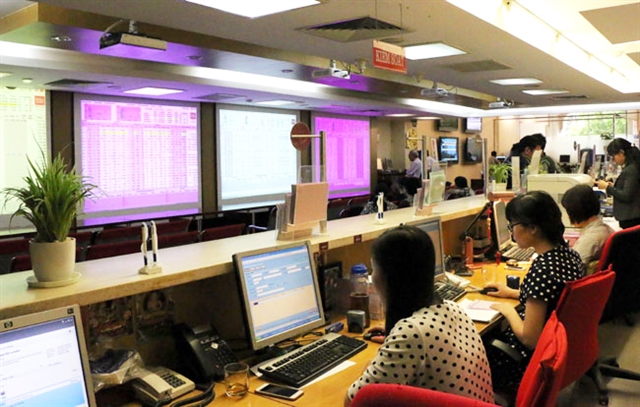
HÀ NỘI — The development of the equity market will help promote the transparency and corporate governance of listed companies, especially public companies with State capital, an official has said.
The statement was made by Đặng Quyết Tiến, director of the finance ministry's Corporate Finance Department, during a seminar held on Tuesday in Hà Nội.
“This will help boost the volume of transactions in the stock market, increasing the liquidity for State shareholders,” Tiến said.
“There is a problem that has persisted for many years in most State-owned enterprises, which is the ineffectiveness in the management and use of State capital,” he said.
“The development of the equity market would help State-owned enterprises be less dependent on bank credit loans, diversifying forms of capital mobilisation.”
The Vietnamese stock market has seen remarkable development since its inception, but the rate of capital mobilisation via this market was still very low, said Nguyễn Tú Anh, director of the General Economic Department under the Central Economic Committee.
“The diversification of products on the market is still poor, resulting in high volatility. At present, idle capital in the economy is quite large, the deposit interest rates of banks have decreased and the interest rates of Government bonds have dropped deeply, which are very favourable conditions to develop the stock market,” he said.
“Over the past 20 years, Việt Nam's stock market has made great progress, promoting its role as a capital mobilisation channel for the medium and long term. However, more efforts are still needed to achieve the upcoming development goals,” said Tạ Thanh Bình, Director of Securities Market Development Department under the State Securities Commission.
“The status upgrade of the stock market needs efforts not only from the securities industry and the stock market regulators but also from the public enterprises themselves. This will be achieved only when the businesses prove their transparency, complying with the discipline of information disclosure, following international accounting standards (IFRS),” she said.
The new era required efforts to improve corporate governance, the professionalism of the investor community and the ability of regulators to operate the market, said Cấn Văn Lực, senior advisor of the Bank for Investment and Development of Việt Nam (BIDV).
“People and technology are two decisive elements for the future development of Việt Nam's capital market,” he said.
Before the inception of the stock market, businesses were totally dependent on banks regarding capital, said Nguyễn Đức Hậu, Deputy General Director of HAPACO Group, the first enterprise in the north listed on the stock market of Viet Nam.
“Since the opening of the stock market, HAPACO and many other businesses have raised hundreds of trillion Vietnamese đồng from public investors, thereby expanding investment, having new shareholders, partners and wide-scale markets,” he said.
“We began as a small company, with equity capital of only VNĐ10.8 billion at the time of equitisation, but now HAPACO has an equity of more than VNĐ1 trillion,” he said.
“The 4.0 era will change the way that investment banks, securities companies and investment funds interact with customers,” said Phạm Tiến Dũng, Research Director of Bảo Việt Securities Joint Stock Company.
“Robots will do a lot of computing work instead of humans in the future. The rise of automation in the financial industry has changed the speed and form of the stock market,” Dũng said.
“The segments of retirement insurance, health insurance and property management will witness a great development in Việt Nam's capital market in the new decade,” he said.
After more than 20 years of establishment, the structure of the capital market has been clearly shaped, consisting of two main components, namely the stock market and the medium and long-term credit market.
In 2000, the market capitalisation of the stock market was only VNĐ986 billion, equivalent to 0.28 per cent of GDP, and after two decades, its capitalisation has soared to an equivalent to 83 per cent of GDP. — VNS
Xem thêm: lmth.ycnerapsnart-ssenisub-tsoob-spleh-tekram-ytiuqe-gnivirht/076619/ymonoce/nv.swenmanteiv